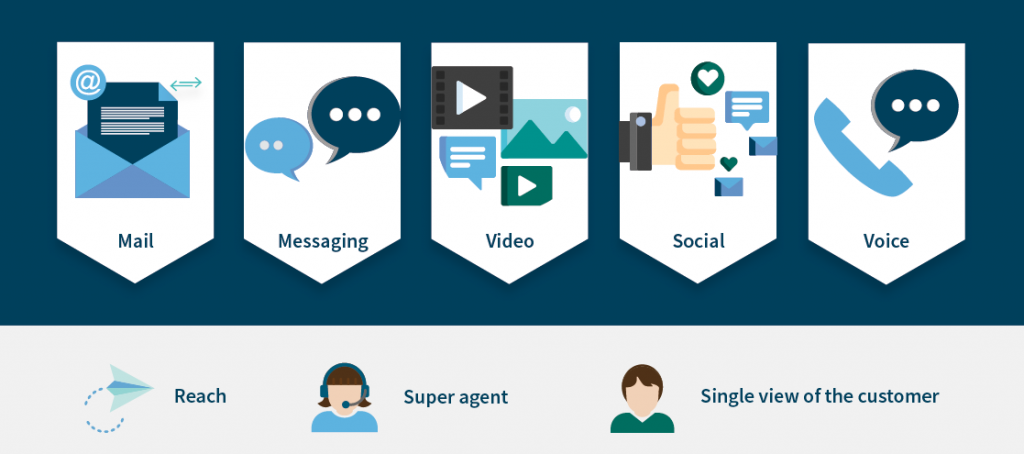We have all had our fair share of bad call-centre experiences. There’s an expectation and then there’s the reality of what happens for a customer.
Let’s take a look at a typical customer engagement. We’ll call the customer Bob.
In this scenario, Bob has experienced a service-affecting issue with his mobile phone contract. He calls the contact centre, along with thousands of other customers, and is put on hold. After 20 minutes he hangs up, because he has an important meeting to attend, and he calls back later.
When he calls back, he is put on hold again, so he visits the company website and emails customer support. He receives an automated response with no indication of follow up or resolution times. The next logical step is to take to social media and vent his frustration. Which is met with a deafening silence.
The following day, Bob rings up the contact centre again and while on the phone to the agent, they ask Bob to repeat his service affecting issue for the third time. Additionally, while on the phone to the agent he then receives an email and social response from two other agents. The organisation is unaware of Bob’s journey and this frustrates him even more.
What is wrong with this scenario?
The truth is, customers want their issue dealt with quickly without repetition, and by an agent who can help without passing them around.
It’s no surprise that a recent report published by Contact Babel concluded that customers and organisations rate the most important factors regarding customer satisfaction as follows:
- First time, single agent contact resolution
- Short wait times
- Choice of medium to communicate
- Issue is handled by one single agent
Despite organisations recognising the importance of these areas, why then are we still having these dreadful customer experiences?
In a new study by Call Centre Helper, it was revealed that fewer than 10% (9.6%) of contact centres have managed to fully integrate their communication channels, while almost four times that number (36.0%) use multiple solutions, one for each supported channel.
The same study also revealed that 53.8% of organisations say the need for new technology is stopping them from running their dream contact centre and 17.4% of contact centres aren’t ever consulted or involved in corporate digital transformation efforts.
So, how should it work?
It’s simple. The answer is an Omni-Channel platform.
Omni-Channel services bring multiple channels together into a single, customer-centric view. Voice is enhanced with email, messaging, video and social interactions. Customers are free to initiate engagements via any medium and move seamlessly from one to another as a part of a single enquiry.
In an Omni-Channel environment, the agent has visibility across all channels, and is empowered to:
- Take ownership of the enquiry across multiple touchpoints;
- Close down any duplicate contacts
- Simultaneously respond to social commentary to mitigate reputational damage, and;
- Ensure the customer is satisfied
The customer experience can be improved immediately with an agent being able to greet Bob in the following way:

‘Hello Bob, I see you have phoned, emailed, and tweeted us regarding the same service effecting issue. I can also see you have been trying to get through to speak to someone for a while, and I would like to apologise for the inconvenience straight away, and get this issue resolved for you as soon as possible.’
Immediately you have reassured Bob. This may seem like a subtle difference, but it has wide-ranging implications for the way your business works, along with customer satisfaction and the cost to serve.
Omni-Channel isn’t just about responding to customer communication preferences; it’s also about adopting a new, smarter way of working.
So how does this benefit the customer, organisation and the agent?
Benefits to the customer:
- Improved customer experience – allowing for first-time contact resolution
- The choice of where, when and how to engage
- The customer gets a personalised service
Benefits to the organisation:
- Cost to serve – one agent can do the work of three agents on every channel
- Reporting – organisations can see where the touchpoint interactions are taking place and make informed decisions by analysing the insights
- Customer journey mapping – organisations can identify failings and opportunities for improving the customer experience and for engaging customers
To the agent:
- Upskilled agent – communicating on different channels requires different skill sets, for example communicating over voice vs chat. The agents are then in a better place to seek a higher wage
- The agent is now equipped with the right tools to work more efficiently and to empathise with the customer
- Increasing the agent’s engagement levels – the agent is now working on a number of different media, therefore eliminating repetitive tasks
To find out more about Omni Channel, read our blog ‘Are your customers truly at the heart of everything you do with Omni-Channel?’




